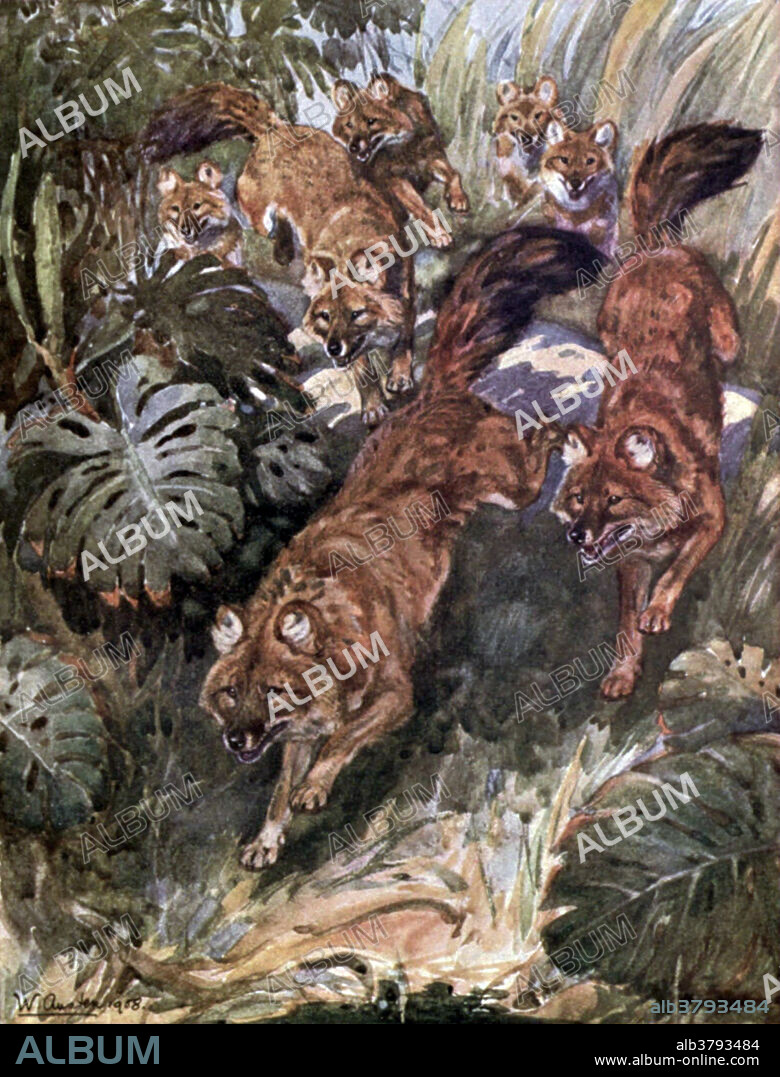alb3793484
Dhole, Endangered Species, Illustration

|
Add to another lightbox |
|
Add to another lightbox |



Buy this image.
Select the use:

Title:
Dhole, Endangered Species, Illustration
Caption:
The dhole (Cuon alpinus) is a canid native to Central and Southeast Asia. The dhole has been variously described as combining the physical characteristics of the grey wolf and red fox, and as being cat-like on account of its long backbone and slender limbs. The general tone of the fur is reddish, with the brightest hues occurring in winter. Dholes are more social than grey wolves, and have less of a dominance hierarchy, as seasonal scarcity of food is not a serious concern for them. Dholes are primarily diurnal hunters, hunting in the early hours of the morning. They rarely hunt nocturnally, except on moonlit nights, indicating they greatly rely on sight when hunting. Dholes are listed as endangered by the IUCN, as populations are decreasing and estimated at less than 2,500 adults. Factors contributing to this decline include habitat loss, loss of prey, competition with other species, persecution, and disease transfer from domestic dogs. Taken
Credit:
Album / Science Source / Biodiversity Heritage Library
Releases:
Model: No - Property: No
Rights questions?
Rights questions?
Image size:
2742 x 3600 px | 28.2 MB
Print size:
23.2 x 30.5 cm | 9.1 x 12.0 in (300 dpi)
Keywords:
1900S • 1909 • 1990S • 20 20TH XX XXTH TWENTIETH CENTURY • 20 XX TWENTIETH CENTURY • 20TH CENTURY • 20TH • 90S • ALPINUS • ANIMAL • ANIMALIA • ART • ASIATIC • CANID • CANIDAE • CANIDS • CANINAE • CARNIVORA • CARNIVORE • CARNIVORES • CARNIVOROUS • CENTURY • CHENNAI • CHORDATA • CHORDATE • CUON • DHOLE • DOG • DRAWING • EATER • EATING • ENDANGERED • FAUNA • ILLUSTRATION • ILLUSTRATIONS • INDIAN • INDIGENOUS PEOPLES OF THE AMERICAS • INDIO • LOBO • MAMMAL • MAMMALIA • MAMMALIAN • MAMMALS • MEAT • MOUNTAIN • NINETIES • NINETIES, THE • NINETY DECADE • RED • SPECIES • THREATENED • TWENTIETH CENTURY • WHISTLING • WILD • WILDLIFE • WOLF
 Pinterest
Pinterest Twitter
Twitter Facebook
Facebook Copy link
Copy link Email
Email
